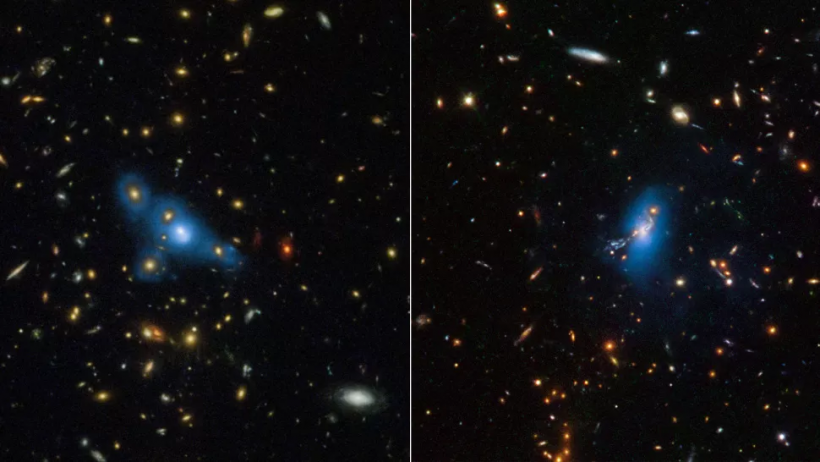A strange galactic ghost was seen by NASA's Hubble Space Telescope lurking around ancient wayward stars and it makes its presence known with a bright light.
Hubble recently conducted an infrared survey of a so-called "intracluster light" to shed more light on its mysteries. The latest findings imply that these stars have been roving for billions of years and are not a result of dynamical activity within a galaxy cluster.

(Photo : NASA, ESA, STScI, James Jee (Yonsei University)/IMAGE PROCESSING: Joseph DePasquale (STScI))
Intracluster Light
Ten galaxy clusters that were nearly 10 billion light-years distant were included in the survey. The feeble intracluster light is 10,000 times fainter than the night sky when viewed from the ground. NASA notes that measurements must then be taken from space.
The study, which looked back billions of years ago, found that the proportion of intracluster light to the cluster's overall light remained constant
This indicates that these stars were already homeless at the beginning of the cluster's creation, according to James Jee of Yonsei University in Seoul, South Korea, one of the study's authors.
NASA explains that when a galaxy orbits the center of a cluster, gaseous material in the gap between galaxies might cause stars to be dispersed outside of their galaxy of origin.
But Jee disqualifies this mechanism as the main reason for the intracluster star generation, based on the results of the most recent Hubble scan.
This is due to the fact that if stripping were the dominant factor, the intracluster light percentage would have increased over time to the present. The latest Hubble measurements, however, reveal a steady fraction across billions of years.
Homeless Stars
Jee explains that they still do not know what made these stars homeless because current theories are unable to explain their results but noted that they were created in large amounts in the early universe.
The researcher adds that in their early formative stage, it is likely that galaxies were small and produced stars easily due to a weak gravitational grasp.
"If we figure out the origin of intracluster stars, it will help us understand the assembly history of an entire galaxy cluster, and they can serve as visible tracers of dark matter enveloping the cluster," Hyungjin Joo of Yonsei University, the first author of the study, said in a statement with NASA.
Fritz Zwicky said that one of his most fascinating findings was spotting brilliant, dim intergalactic matter in the cluster, which led to the discovery of intracluster light in the Coma cluster of galaxies in 1951.
Zwicky was able to see the ghost light even with a small 18-inch telescope because of the Coma cluster. It has at least 1,000 galaxies and is 330 million light-years away from our planet.
The mysteries of intracluster stars will be further unraveled with NASA's James Webb Space Telescope with its powerful infrared vision.
The study's findings were published in Nature.
Related Article: NASA's Hubble Space Telescope Captures 'Butterfly Nebula' In Stunning Motion | Fun Facts About This Beautiful Space Butterfly










